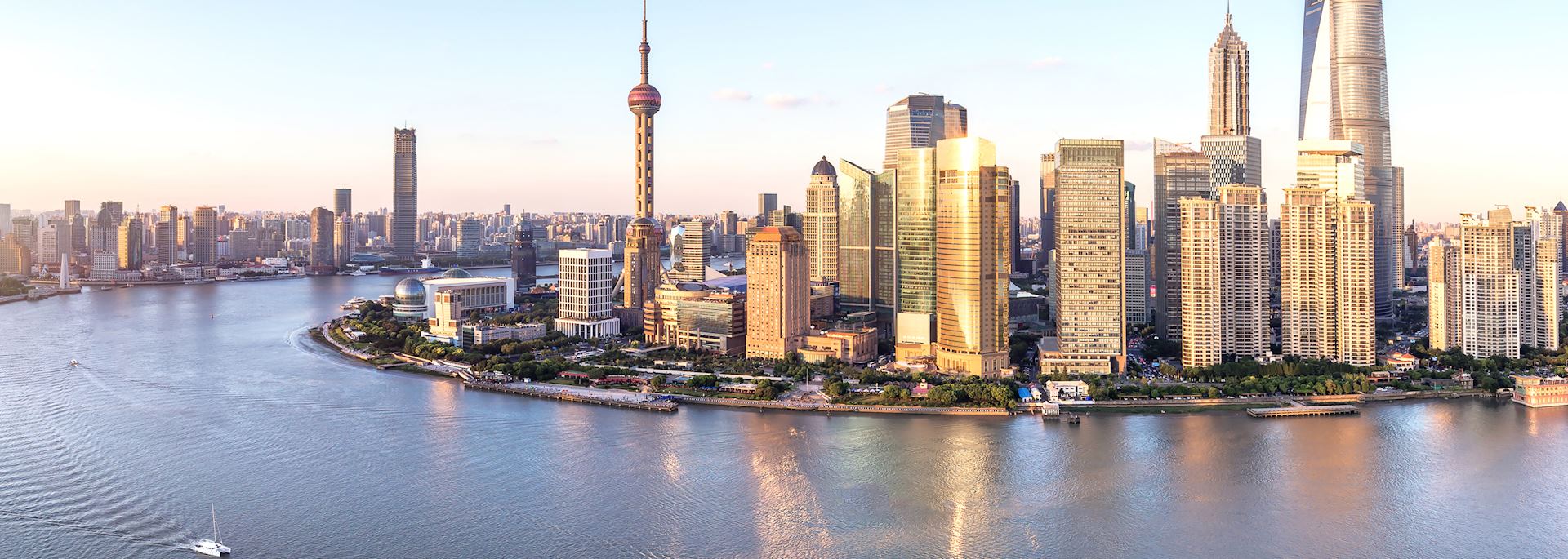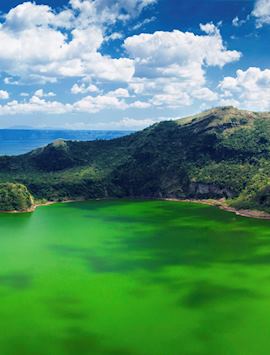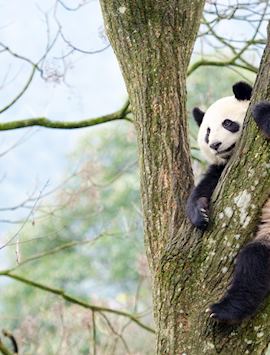By China specialist Cheryl
What does it mean to travel luxuriously in China? You need to consider three things.
Don’t be afraid to choose China’s boutique hotel offerings, which often have some remnant of historical character, rather than more centrally located chain hotels. Next, consider including a bespoke guided tour in your trip: Xian and Shanghai both offer private touring that can be adapted to your interests which (I feel) give you a richer feel for local culture. I also think it’s a luxury to get out into open countryside, and experience a calmer, rural China as well as the energetic cosmopolises.
To show you what I mean, I’ve put together my own luxury trip to China. It leans heavily on this China highlights tour, but I’ve added touches (certain hotel stays, activities and transport choices) which make for a more luxe experience.
I’ve allowed just over two weeks, but you could also take the essence of my trip and condense it into a shorter space of time.
Days 1-4: Beijing
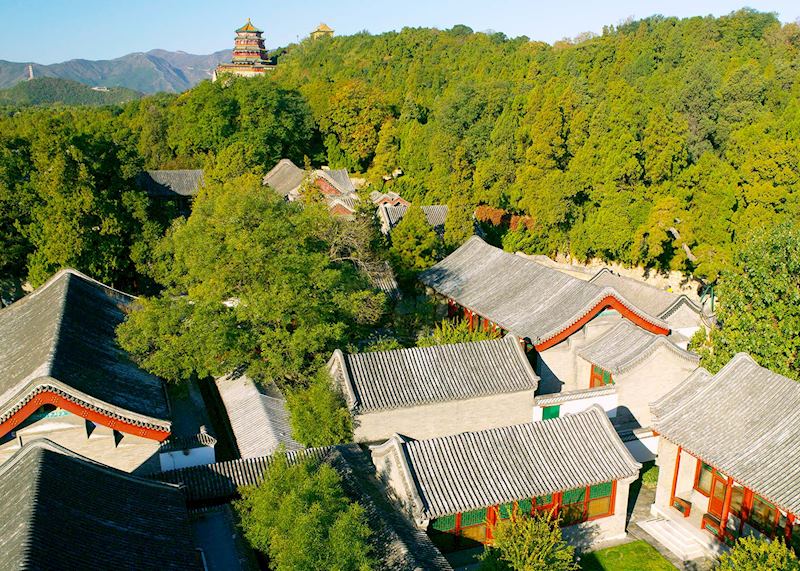
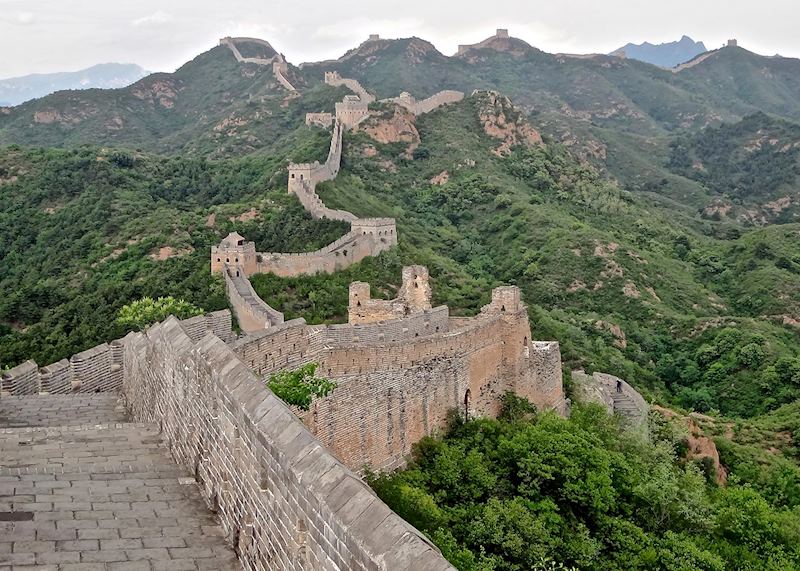
In China’s capital, I’d divide my time between the Aman Summer Palace and the Peninsula Beijing, a centrally located, classic luxury hotel.
As the Aman’s name suggests, this property is attached to the Summer Palace, a leafy and landscaped pleasure dome the imperial court escaped to during the warmer months. It’s a rewarding corollary to the Forbidden City, the better-known palace complex that forms a stately footprint in central Beijing. (You can read more about visiting the Forbidden City in our China highlights guide).
The Aman buildings have a private back entrance into the Summer Palace, so you can practically roll out of bed and stride into the grounds. This hotel is a lovely place to stay: its series of airy pavilions and courtyards borrow from Ming and Qing architecture, and rooms are all lacquered woods and four-poster beds.
Aside from taking in Tiananmen Square, one of the things I like most to do in Beijing is to take a private cooking class in the hutongs. The best one, for me, is run by a young Beijinger called Carlyle. Under the tutelage of chefs from the city’s finest hotel restaurants, you learn how to prepare classic Chinese dishes, such as kung pao chicken.
I also recommend escaping Beijing altogether, and heading out to the Great Wall of China.
Chinese domestic tourists are often driven by convenience, so they visit the sections of the wall closest to the city: Badaling and Mutianyu. For a more serene experience, go to the Jinshanling section.
We explain more about Jinshanling’s allure in our blog piece on classic sites with a twist. Essentially, it presents your best chance of walking alone on the wall. You’ll also get to pore over views of the wall veering off in a zigzag across the ridgeline of the Jinshanling mountains.
I’d leave Beijing for my next stop, Pingyao, on a high-speed train, part of China’s efficient and logistically straightforward rail network. The journey is about four-and-a-half hours. For extra comfort, you can upgrade to business class. Expect flat beds, much more space, and the chance to be plied with food and drink en route.
Days 5-6: Pingyao

Pingyao’s old town is bewitching: it’s a walled enclave of cobbled streets, red lanterns, courtyard housing and shabby former banks that once grew fat on the city’s opium trade. Overall, the place makes for a nice change of scene after Beijing, especially if you devote a whole day to ambling around its walls and narrow lanes.
I love Jing’s Residence, a converted courtyard property and boutique hotel. Staying here and sipping tea, while sitting in its cosseted pavilions, feels like you’re stepping into Old China proper.
You can find out more about Pingyao’s ambiance in our blog about places that feel lost in time.
It’s then roughly a three-hour journey by high-speed train to Xian.
Days 7-8: Xian
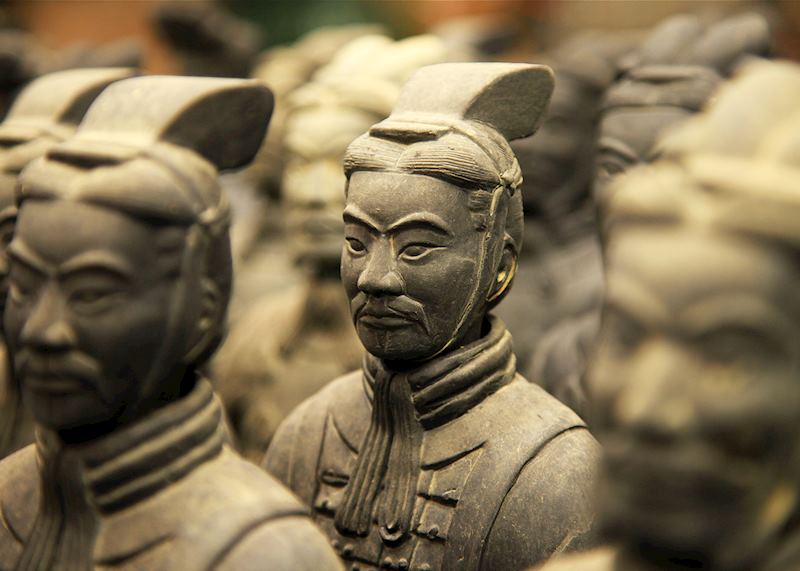
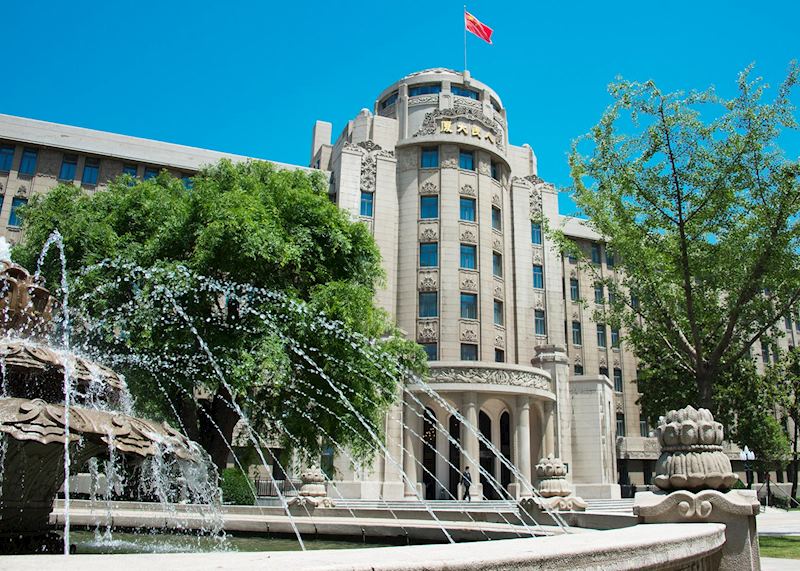
If it’s your first time in Xian, an imperial walled city turned modern metropolis, you’re probably going to want to visit the Terracotta Army. Though the rows of life-size clay soldiers standing in formation are beguiling, they’re not the only sight in Xian. And, no matter what time of day you visit, you need to be prepared to jostle with hundreds of fellow visitors.
A more exclusive experience is a ‘Craftsman tour,’ which sees you explore the isolated farming villages of the nearby Loess Plateau by private Jeep, with your own bilingual driver-guide at the helm. Rocky is the best of these guides, in my book ― he follows his nose, stopping off to show you anything of interest that crops up.
Once, we passed preparations for a marriage ceremony, and he caught me peering out of the window to admire the streamers and decorations. ‘Want to go have a look?’ he said, pulling the vehicle to a stop. So, we did (he seemed to know everyone there).
Aside from wedding crashing, Rocky can take you to sample some of the area’s most succulent roujiamo (a pulled pork burger) and you’ll call into private homes to watch some masterful artisans at work. I watched open-mouthed as a papercutter created a complex ‘Year of the Pig’ design with what seemed like only a few deft snips.
I’d stay at Xian’s Sofitel Legend People’s Grand Hotel. Yes, its name is a mouthful, but it’s situated in an elegant heritage building and makes for a restful base ― helped, I think, by its gardens and the daily t’ai chi sessions on offer.
Days 9-12: Guilin, Yangshuo, and Longji
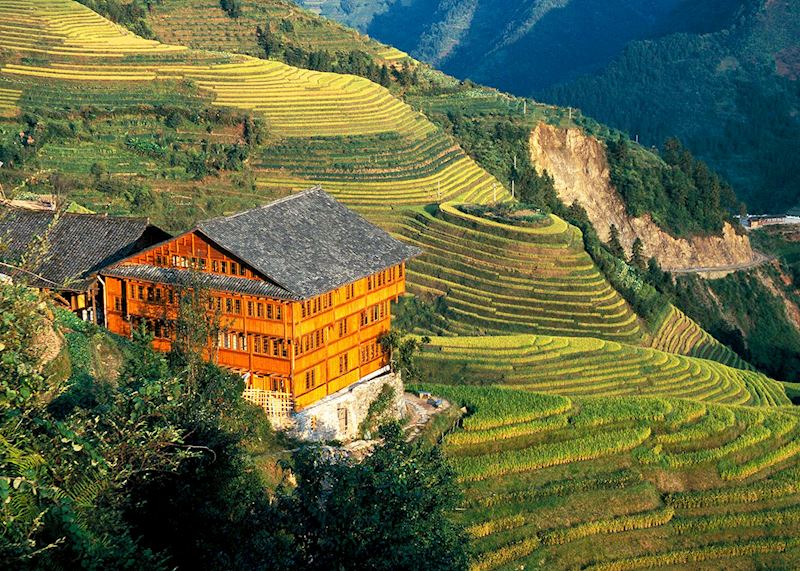
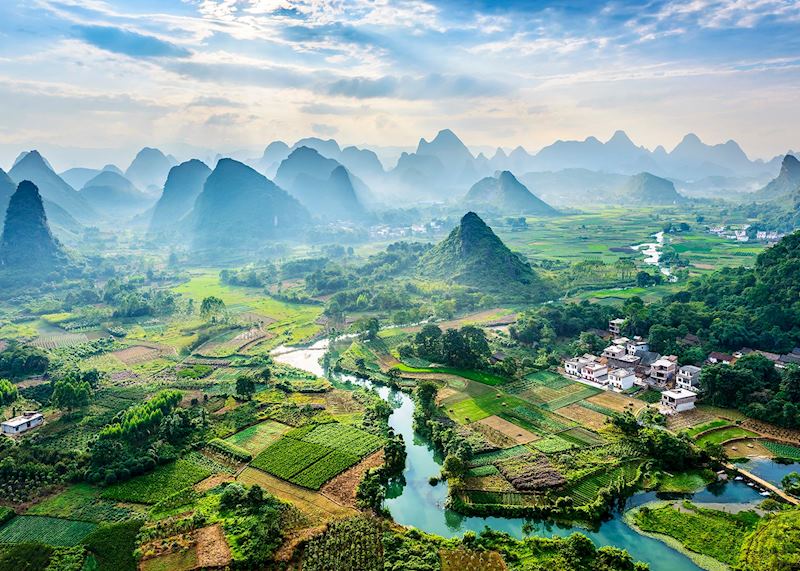
Getting to Guilin is a two-and-a-quarter-hour flight from Xian. The riverside city is your embarkation point for a cruise down the Li River to Yangshuo, a market town. You glide past a landscape of karst peaks, some looking like conical witches’ hats, some hulking hunchbacks, and others stumpy. All are smothered in greenery.
Though smaller than Guilin, Yangshuo is only getting busier, so I’d decamp to the village of Fuli, to stay at the Banyan Tree Yangshuo Resort. Like all Banyan Tree properties, it has a particularly peaceful spa.
The hotel provides a shuttle service into Yangshuo, so go here in the evening to watch the Impressions Liu Sanjie, a theatrical extravaganza based around a Chinese legend of love against the odds.
The brainchild of Zhang Yimou, who directed Beijing’s opening and closing Olympic ceremonies, it’s a spectacle involving acrobats, illuminations, floodlit karsts, singers, performers riding in on rafts, and flaming torches… the scale of the thing (it involves 600 performers, many of them local) always astounds me.
There’s so much to take in, so get the best seats you can afford. The covered ones in the middle of the stadium directly facing the river, on which the action takes place, are the optimum seating.
The next day, it’s a two-hour drive to Longji, where you’ll find yourself in a valley of rice terraces swirling and looping in great green gyres. I recommend taking a four-hour walk among this ‘Dragon’s Backbone’ with your guide. Walking from the villages of Dazhai to Ping An, you traverse several terraces and have views of the whole landscape.
On the way, you might see women from the Red Yao minority going about their work. They only cut their hair twice in their lifetime, and wear their sweeping manes wrapped around the top of their heads.
It’s best if you can spend a night among the terraces. Most people only visit them for the day, so by later afternoon, you feel like you have the run of the place.
I’d always stay at Li-An Lodge. Artist Keren Su owns the place, and has designed each room along a different theme (such as calligraphy or porcelain). The lodge is in Ping An, a village that’s inaccessible to cars, making it even more tranquil.
After unwinding here for a day or so, you’ll be driven three hours from Longji to the airport at Guilin to catch your onward flight to Shanghai. The journey takes around two and a half hours, and the city makes a suitably showy finale to your China trip.
Alternatively, you could catch a high-speed train to Hong Kong, which takes around five hours, and fly home from there. Here you can sample some of China’s best food and visit markets that make for an invigorating sensory experience.
Days 13-15: Shanghai


Dubbed ‘the China of tomorrow,’ Shanghai seems the epitome of a high-gloss, showily modern, always-looking-forward China — and, if you only ever gape at Pudong’s cluster of skyscrapers and neon-streaked towers, that’s exactly what it appears.
But, Shanghai has many different identities, including its British and French colonial past. The best way of delving into them is via a bespoke half-day walking tour with Patrick, a long-time expat and expert on many facets of his adopted city.
His tours mostly focus on Shanghai’s rich social, historical and architectural fabric, but he’ll tailor them to your interests. You can investigate everything from the city’s Art Deco buildings to its Jewish heritage.
Talking of food, in the evening (this being a luxury tour, after all), I’d dine at Ultraviolet, a ten-cover Michelin-starred restaurant conceived by French cheffing wunderkind, Paul Pairet.
Then, as a final flourish, you could finish your trip with cocktails at the rooftop bar of Hyatt on the Bund (which has the best night-time city views, for my money). Or, if you stay at the Peninsula, you could plump for an evening cruise of the glittering Huangpu River on the hotel’s private yacht.
Read more about luxury trips to China
Start thinking about your experience. These itineraries are simply suggestions for how you could enjoy some of the same experiences as our specialists. They're just for inspiration, because your trip will be created around your particular tastes.
View All Tours in China